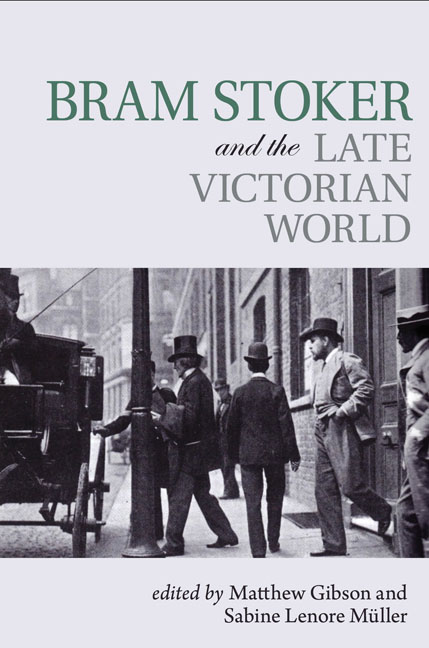3 - The Impress of the Visual and Scenic Arts on the Fiction of Bram Stoker
Summary
Stoker, as Acting Manager of the Lyceum Theatre, had a somewhat unique relationship with the visual arts and with the artists of his day. His correspondence shows a large number of dealings with contemporary painters, from the older Pre-Raphaelites to later, more Impressionist-style painters such as John Singer Sargent. He acted more or less as a fixer and arranger for portrait sittings of Sir Henry Irving himself (one of the most painted subjects of the late nineteenth century); as an agent, practically, for his friend John B. Yeats (whose drawing of Sir Henry is included in Personal Reminiscences of Henry Irving (1906)); but, above all, worked with scene painters such as W. L. Telbin and Joseph Harker, while managing one of the most visually sumptuous theaters of its time.
Lisa Hopkins has looked at the extensive references to Shakespeare, in particular Othello and Hamlet, which shape Dracula and The Jewel of Seven Stars. Catherine Wynne has recently explored the means by which techniques of the late nineteenth-century “Gothic stage” made an impress on Stoker's fiction, with Ellen Terry's portrayal of Ophelia apparently affecting the character Teuta in The Lady of the Shroud and Irving's production of Macbeth also affecting the portrayal of Dracula and the rest of Bram Stoker’s fiction. Stephanie Moss has even seen the influence of the famous stage trick “pepper's ghost” in Dracula's inability to see his own reflection.
However, it is also perhaps necessary to observe how Stoker's visual language and portrayal of both characters and settings were affected by the actual scenic arts of the theater, and by the more general trends in painting, which changed effectively from the Turneresque to the luscious later Victorian Pre-Raphaelite style and, finally, towards the more elliptical classicism of Art Nouveau and Fin-de-Siècle by the time Irving had lost the management of the Lyceum. The following chapter will examine firstly what Stoker's early reviews for the Dublin Evening Mail reveal about his attitude to both the scenic arts and towards painting generally; how the use of color on the stage affected his use of color in fiction; how the different schools of art, from the Pre-Raphaelite to the more elliptical Art Nouveau, are present in the iconography of his creative work; and, finally, how Stoker presents the practices of scene-painting and art in his fiction.
- Type
- Chapter
- Information
- Bram Stoker and the Late Victorian World , pp. 51 - 74Publisher: Liverpool University PressPrint publication year: 2019



